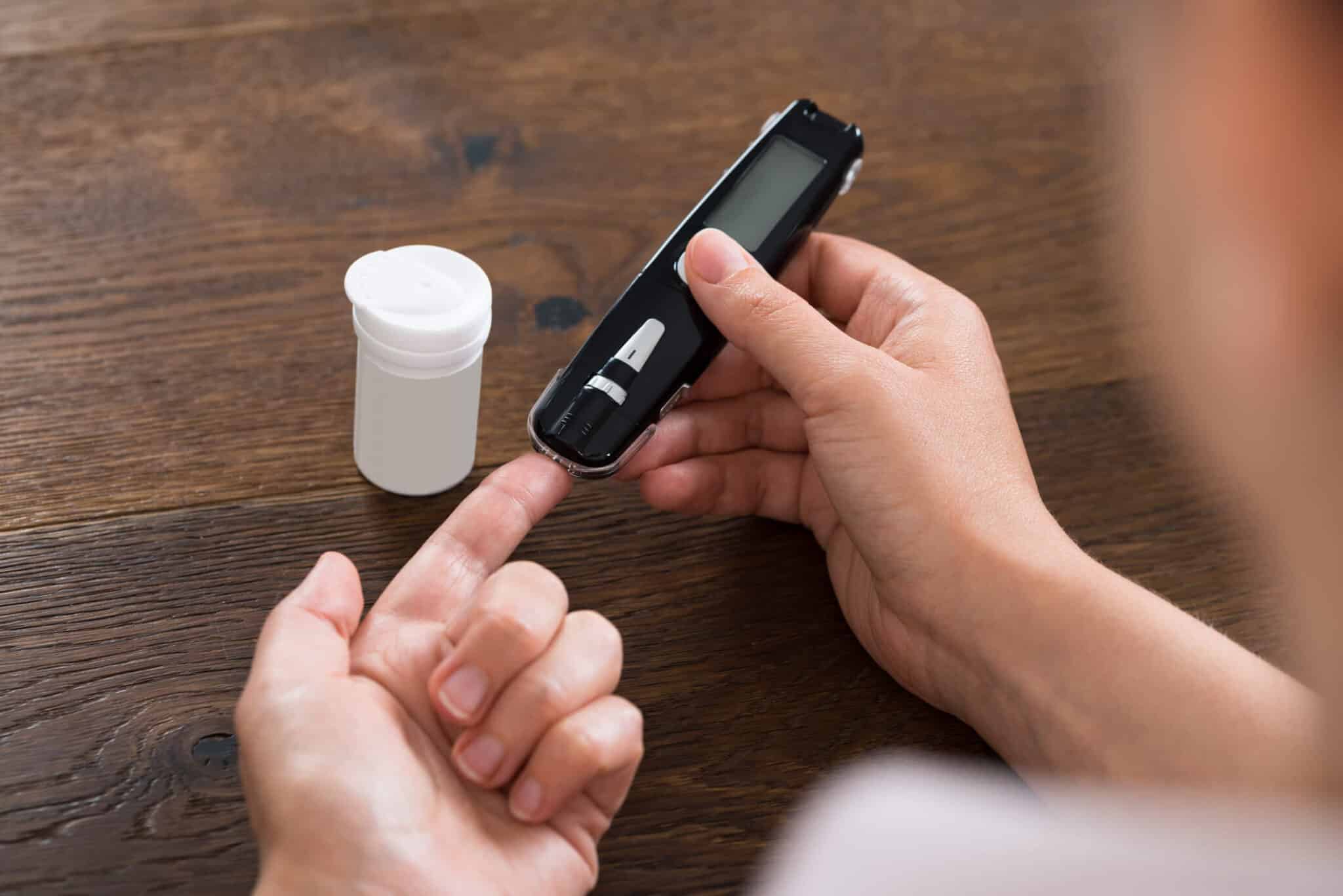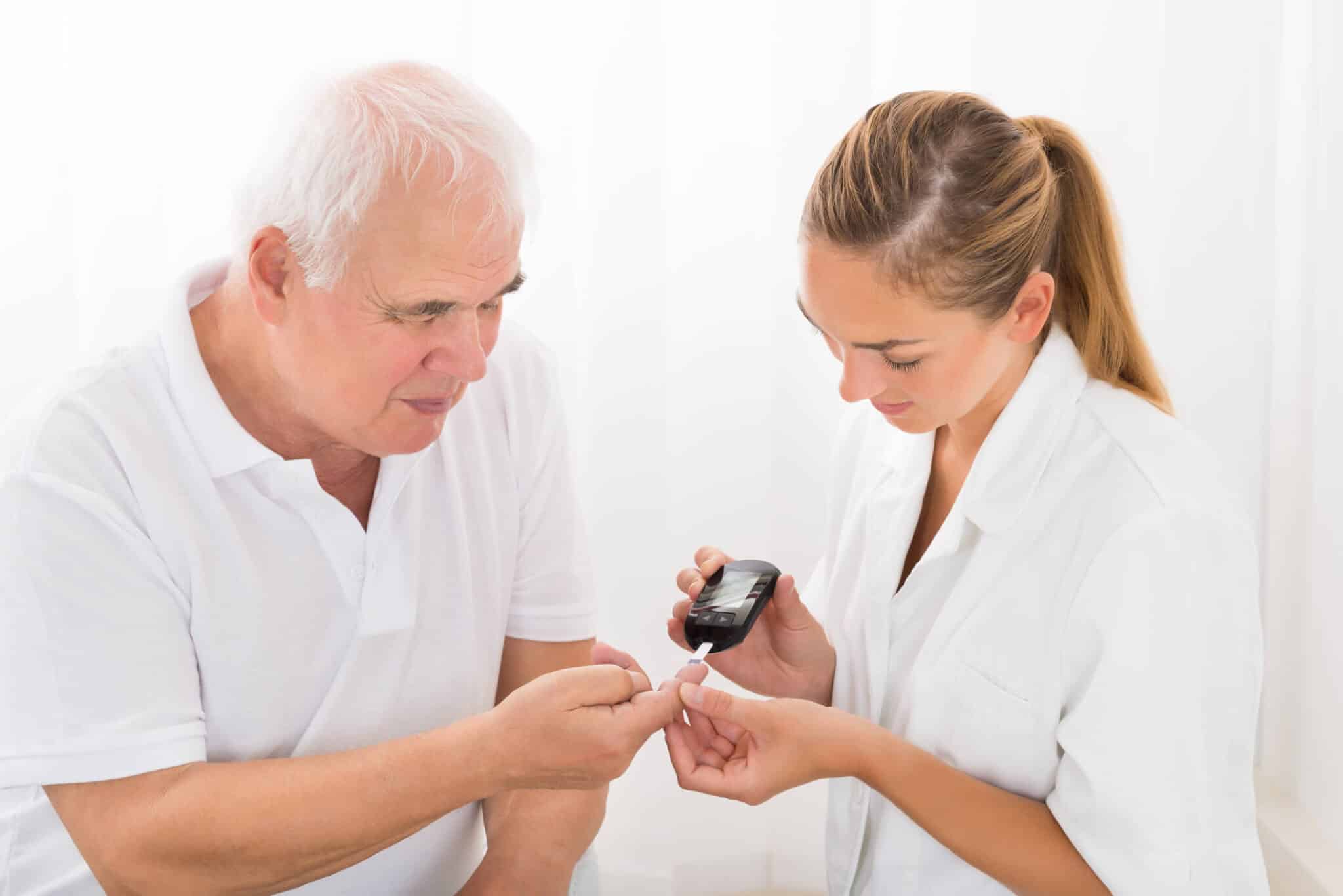
A Comprehensive Guide To Glucose Monitors & Test Strips
Posted on August 15, 2022 at 06PM
Monitoring blood glucose levels is a critical part of effective diabetes management. Whether you have type 1 diabetes, type 2 diabetes, or prediabetes, knowing how to use the correct device—from traditional blood glucose meters that require fingerstick methods and lancets for measurement to portable continuous glucose monitoring (CGM) systems worn on the body or hand, can significantly improve your health, control, and quality of life. For example, some people benefit from real-time glucose tracking, while others prefer more manual approaches. In this guide, we’ll explore the tools available, including glucose monitors, test strips, and CGMs, while explaining how you can even sell diabetic test strips or sell you unused Dexcom G6 sensors through More Cash for Test Strips.
What Are Glucose Monitors?
A glucose monitor is a device used to measure the amount of glucose (or sugar) in your blood. Monitoring your blood glucose level is vital for every patient managing diabetes, as it helps prevent complications such as hypoglycemia, hyperglycemia, and long-term illness related to poor diabetes care. The cells in your body rely on stable glucose levels for proper function, so understanding the ways your levels can drop or spike is essential. There are several types of glucose monitors, each with unique features, varying levels of accuracy, and distinct usage methods. When choosing a device, essential considerations include ease of use, cost, data tracking, and support from your healthcare staff. Ongoing research continues to improve monitor performance and patient outcomes.
1. Blood Glucose Meters (BGMs)
Blood glucose meters (BGMs) require finger pricks to collect a blood sample. The blood is applied to test strips inserted into the meter, which then provides a reading of your blood sugar level. While considered more traditional, many models today offer enhanced technology for better ease of use, improved accuracy, and faster readings. These devices remain a valuable tool for adults managing diabetes, especially when paired with proper foods, medication, and lifestyle choices recommended by the American Diabetes Association. With modern background music (BGM) apps connecting to your phone, it’s easier to keep track of trends and patterns. Keep in mind that managing diabetes comes with challenges, but the right tools can make daily monitoring more manageable.
Key Benefits:
- Affordable and widely available
- High accuracy when used properly
- Works without internet or Bluetooth
- Covered by many insurance providers
2. Continuous Glucose Monitoring (CGM) Systems

A helpful look at glucose meters and test strips used for diabetes care with support from More Cash for Test Strips based in Carson California
A CGM system consists of a sensor, a transmitter, and a receiver (or a smartphone app). It continuously monitors glucose levels in the interstitial fluid beneath the skin, providing real-time data and trends without the need for frequent finger pricks. These systems are beneficial for individuals who want to closely track their glucose levels and make informed decisions about their care. A CGM measures glucose levels at regular intervals, offering insights into patterns that can help address potential problems before they escalate. There are a growing number of CGM options available, with various manufacturers offering models tailored to different lifestyles and diabetes management needs.
Popular CGM devices include the Dexcom G7, Freestyle Libre, and Medtronic Guardian. Each brand offers intelligent alerts, Bluetooth syncing, smartphone access, and compatibility with insulin pumps. These features enhance your ability to understand glucose patterns and manage blood sugar more proactively. By providing continuous data without the need for constant blood samples, CGMs serve as an essential indicator of overall glucose stability. In the U.S., these devices are increasingly popular tools in diabetes care, often recommended for those pursuing better control or weight loss as part of their treatment plan. If you’re facing a recurring problem with highs or lows, trying something like a CGM might be the right step. For in-depth guidance, consider discussing options with your healthcare provider or consulting a trusted diabetes care book.
How Glucose Monitoring Works
The monitoring process varies by device type. With BGMs, users must collect a blood sample from their finger, palm, or forearm using a needle or lancet. The blood is applied to a test strip, and the meter reads the glucose level. For a CGM device, a sensor is inserted into the abdomen, arm, belly, or thigh to measure glucose levels in real time. The transmitter sends readings to a receiver, such as a smartphone or computer. Each method has its advantages and limitations, and understanding these aspects can provide insight into which tool may be best for your lifestyle. Several factors, including your daily routine, activity level, and risk of low blood sugar, can influence your choice of monitoring. For example, a CGM might help a man with unpredictable sugar drops better fight the effects of hypoglycemia. Regular monitoring also contributes to improved A1C levels over time. This article aims to clarify those differences to help you make informed decisions.
CGM systems provide more comprehensive data analysis, enabling the tracking of trends, spikes, and patterns. They help users make informed decisions about meals, exercise, medications, and overall diabetes care. For people with diabetes, this real-time insight can be life-changing, especially when dealing with high blood sugar episodes or adjusting insulin doses. These systems simplify daily management processes, reducing the need for frequent finger pricks and providing a reliable alternative to traditional monitoring methods. As news of CGM advancements spreads, more insurers are beginning to cover them, recognizing their value in long-term health care outcomes and prevention strategies.
Factors to Consider When Choosing a Glucose Monitor
1. Accuracy and Reliability
Accuracy is crucial for effective management. High-quality glucose monitors undergo rigorous testing, and some models even allow calibration to ensure precise readings. Accuracy is critical around each meal, during pregnancy, or when managing extreme highs or lows. A reliable feature of many modern devices is built-in alerts or real-time updates that enhance safety by helping users respond quickly to changing glucose levels.
2. Cost and Insurance Coverage
The cost of glucose monitors and test strips varies widely. Insurance plans or Medicare may cover some products, but coverage can vary among insurance providers. Be sure to ask your provider what’s included and which devices require a prescription.
3. Ease of Use
Specific devices offer touchscreens, voice commands, and larger displays for ease of operation. Consider your vision, lifestyle, and preferred features before choosing a model.
4. Smartphone Integration
Modern devices often connect to a smartphone app or sync with smartphone apps to provide alerts, track daily data, and even send reminders. These options are ideal for tech-savvy users who want complete control over their glucose monitoring experience.
Glucose Monitoring and Lifestyle Management
Your blood glucose levels can be affected by many factors, including:
- Food and carbohydrates
- Stress and sleep
- Physical activity and exercise
- Medications and insulin
- Weight, BMI, and obesity
- Illness and episodes of lows or highs
- Weather, temperature, and hydration
Maintaining reasonable control requires understanding how these variables impact your blood sugar levels. Glucose tracking provides essential information that helps you adjust your diet, modify your exercise routine, or speak with your healthcare provider about adjusting medications.
Insights from CGMs or BGMs give you the power to make timely decisions about diabetes care. You can avoid dangerous fluctuations, reduce the risk of complications, and feel more confident in your daily life.
Questions to Ask When Choosing a Glucose Monitoring Product
When evaluating different tools and products, ask yourself:
- Does the device require finger pricks or offer continuous monitoring?
- How does the system handle data storage and analysis?
- Are the alerts and alarms customizable?
- Can I use it with my smartphone, insulin pump, or app?
- What is the expected lifespan of the sensor, transmitter, or reader?
- Does my insurance cover this product, or do I need to pay out of pocket?
- Are there alternatives or more affordable options?
The Importance of Glucose Data & Trends

An educational image showing modern CGM tools available for sale to More Cash for Test Strips operating in Carson California
Glucose data offers a comprehensive view of your condition over time. These measurements can help detect patterns or early signs of problems such as:
- Insulin resistance
- Recurrent hypoglycemia or hyperglycemia
- Poor medication response
- Hormonal changes
- Impact of stress, meals, or exercise
By spotting trends, you can partner with your doctor, nurse, or diabetes educator to fine-tune your treatment plan. This is especially important for those using CGM systems, which can provide 24/7 tracking and detailed analysis of daily activities.
Selling Unused Test Strips and CGM Sensors
Millions of people purchase diabetes supplies every year, yet many end up with extra test strips, sensors, or outdated devices. Sell diabetic test strips, Dexcom G6 sensors, or related products if they are unopened and unexpired—you can turn them into cash by selling them to More Cash for Test Strips.
Why Sell?
- Help others afford diabetes management
- Reduce waste of unused products
- Get cash for unused or excess supplies
This process is simple, safe, and legal. More Cash for Test Strips works with people across the U.S., offering an efficient way to exchange supplies for fair compensation.
Pros and Cons of Different Glucose Monitoring Devices
When choosing a glucose monitoring system, it’s essential to weigh the pros and cons of each type. Blood glucose meters are the most traditional option and remain popular for their affordability, accuracy, and simplicity. However, they require finger pricks for each reading and do not provide continuous monitoring, which may be inconvenient for some users.
Continuous glucose monitoring (CGM) devices, such as the Dexcom G6 or G7, offer the significant advantage of continuous tracking. These systems often integrate with smartphones, providing real-time alerts and trend data. While they offer significant benefits in convenience and blood sugar management, they tend to come with a higher cost and require sensor insertion beneath the skin, which may not be comfortable for everyone.
Hybrid models, which combine insulin pumps with continuous glucose monitoring (CGM) technology, offer an all-in-one solution with advanced features that can significantly improve diabetes care. These systems can automate insulin delivery based on glucose readings, offering enhanced control. However, they are often expensive and may have limited insurance coverage, which can be a barrier for many patients.
It’s also worth noting that the difference between the Dexcom G7 and G6 lies mainly in form, size, and features. The G7 is smaller, easier to use, and designed for more seamless integration with apps and devices, offering enhanced accuracy and greater user convenience.
How Healthcare Providers Help
Your healthcare provider plays a key role in guiding your monitoring choices. They help evaluate your history, needs, and current control. Together, you can decide on the best system, app, or model based on your insurance coverage, prescription needs, and medical background.
Your Diabetes Management Team May Include:
- Doctor
- Nurse practitioner
- Diabetes educator
- Dietitian
- Insurance provider
- Pharmacist
- Caregiver or family members
Final Tips for Glucose Monitoring
- Stick to a consistent routine for test times
- Monitor after meals, during exercise, and before bed
- Keep a record or use a smartphone app to track trends
- Stay alert for symptoms of hypoglycemia or hyperglycemia
- Review your glucose data regularly with your provider
- Look out for spikes, lows, and unexpected fluctuations
By keeping your glucose level within your target range, you reduce the risk of long-term complications, such as nerve damage, kidney disease, and vision loss. Early detection and real-time tracking truly make a difference.
Conclusion: Take Control of Your Health
Whether you’re managing type 1, type 2, or prediabetes, the right glucose monitoring system empowers you with the knowledge, data, and support you need to make informed choices. From traditional meters to modern continuous glucose monitors (CGMs), today’s technology offers more options than ever.
If you find yourself with extra supplies, don’t let them go to waste. You can help others while putting money in your pocket by choosing to sell diabetic test strips or sell your unused Dexcom G6 sensors with More Cash for Test Strips—a trusted leader in the market.
With the right tools, team, and commitment, every person with diabetes can lead a healthier, more informed, and empowered life.
Frequently Asked Questions
1. Can glucose monitors be used by people without diabetes?
Yes, some individuals without diabetes use glucose monitors to track how their diet and activity affect blood sugar, especially in weight management or athletic performance.
2. How long does a CGM sensor typically last before it needs to be replaced?
Most CGM sensors last between 7 to 14 days, depending on the brand. The transmitter may last longer and is often reused across multiple sensors.
3. Are glucose monitors affected by altitude, temperature, or humidity?
Yes, extreme conditions can impact the accuracy of readings. Always refer to the manufacturer’s guidelines for optimal operating environments.
4. Do I still need to check my blood sugar with a fingerstick if I use a continuous glucose monitor (CGM)?
In some cases, yes. While many CGMs reduce the need for fingersticks, specific models may still require calibration or confirmation readings.
5. Are glucose monitors safe for children or during pregnancy?
Yes, but it’s essential to choose a model approved for pediatric or prenatal use. Always consult a healthcare provider for personalized recommendations tailored to your specific needs.
6. Can I travel with my glucose monitor or continuous glucose monitoring (CGM) device?
Yes, most devices are travel-safe. Be sure to pack extra supplies and inform TSA agents if you’re wearing a CGM or carrying diabetics’ supplies through airport security.
7. Can my glucose monitor be connected to a fitness tracker or smartwatch?
Many CGMs and BGMs now offer integrations with fitness devices, either directly or through apps, to provide a fuller view of your health.
8. How should I store test strips to maintain their accuracy?
Store test strips in a cool, dry place. Avoid exposure to moisture, extreme temperatures, or direct sunlight, as these can affect the results.
9. Can inaccurate readings come from expired or contaminated test strips?
Absolutely. Using expired or improperly stored test strips can yield inaccurate results, potentially leading to incorrect treatment decisions.
10. What’s the difference between FDA-approved glucose monitors and non-approved ones?
FDA-approved monitors meet specific safety and accuracy standards. Non-approved products may be cheaper, but they can pose risks due to unreliable data or a lack of regulatory oversight.

